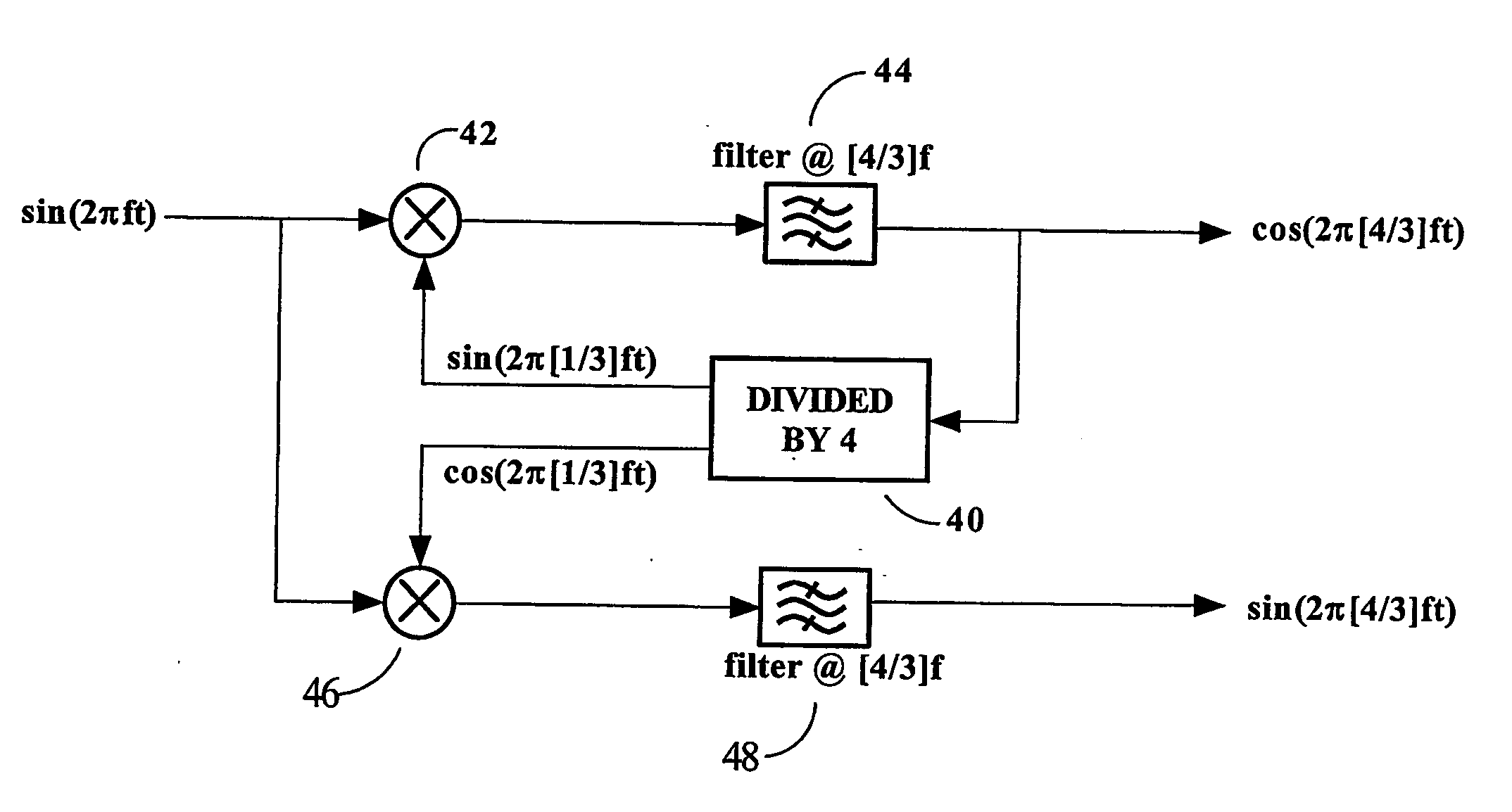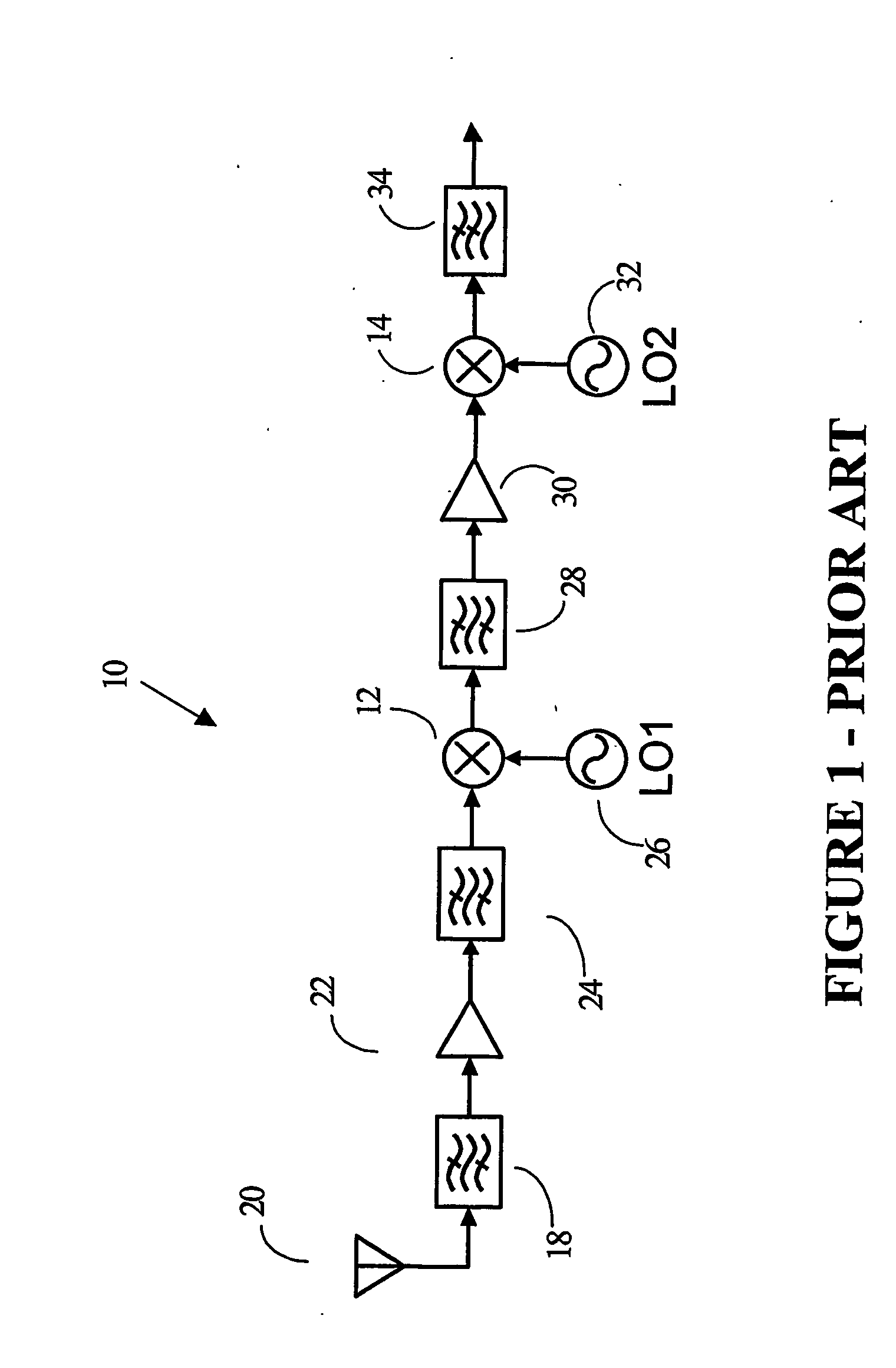Regenerative divider for up and down conversion of radio frequency (rf) signals
a radio frequency (rf) signal and divider technology, applied in automatic control, transmission, automatic scanning with simultaneous frequency display, etc., can solve the problems of reducing the efficiency of integrating, affecting the performance of the receiver, and affecting the efficiency of the integrating process,
- Summary
- Abstract
- Description
- Claims
- Application Information
AI Technical Summary
Benefits of technology
Problems solved by technology
Method used
Image
Examples
Embodiment Construction
[0058] The invention uses regenerative dividers to generate the quadrature components of the local oscillator signal required for up- or down-conversion. In the case of demodulation using direct conversion, these local oscillator signals will have the same frequency as the carrier frequency of the received RF signal. The invention is generally described with respect to such a case, but clearly, the invention can be applied to the generation of local oscillator signals for any up- or down-conversion architecture.
[0059] Two exemplary regenerative divider circuits which address a number of the objects of the invention are shown in the block diagrams of FIGS. 3 and 4, FIG.3 presenting a circuit for narrow band applications, and FIG. 4 presenting a circuit for wide band applications. Both of these exemplary architectures use ¾ of the carrier frequency as the frequency of the local oscillator signal being input to the circuit-denoted as frequency, f. That is, both circuits are designed t...
PUM
 Login to View More
Login to View More Abstract
Description
Claims
Application Information
 Login to View More
Login to View More - R&D
- Intellectual Property
- Life Sciences
- Materials
- Tech Scout
- Unparalleled Data Quality
- Higher Quality Content
- 60% Fewer Hallucinations
Browse by: Latest US Patents, China's latest patents, Technical Efficacy Thesaurus, Application Domain, Technology Topic, Popular Technical Reports.
© 2025 PatSnap. All rights reserved.Legal|Privacy policy|Modern Slavery Act Transparency Statement|Sitemap|About US| Contact US: help@patsnap.com



